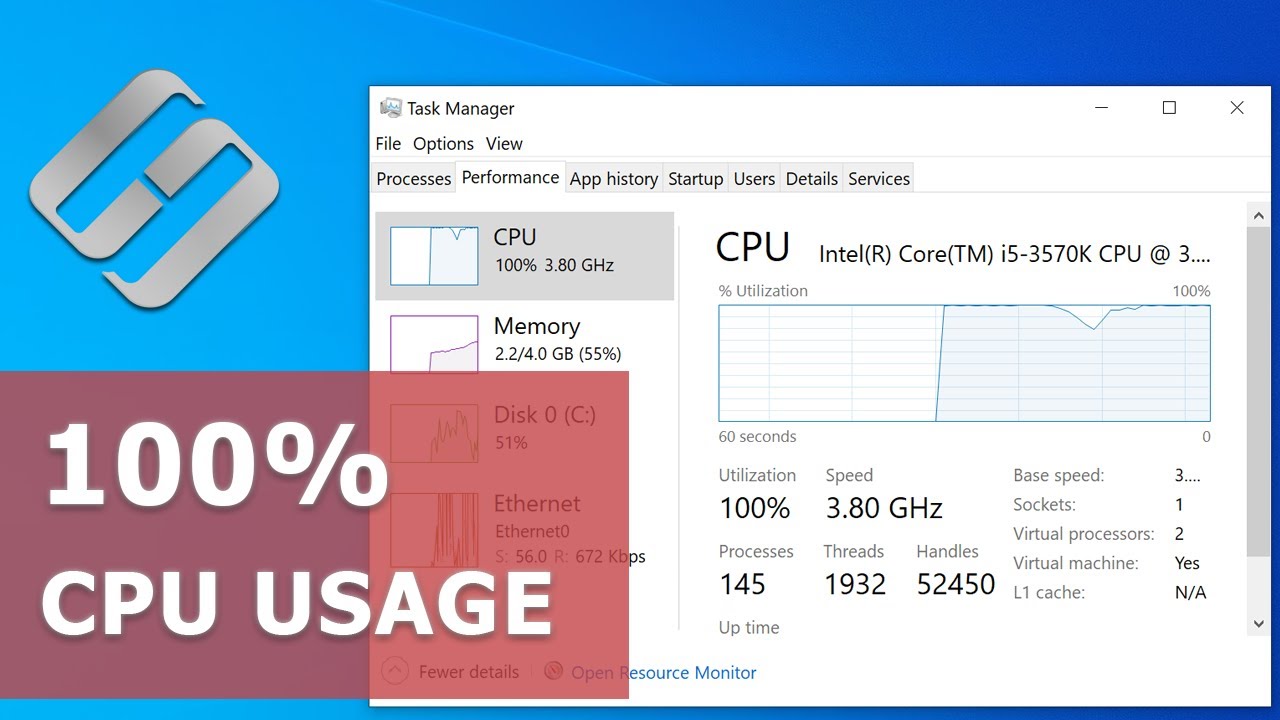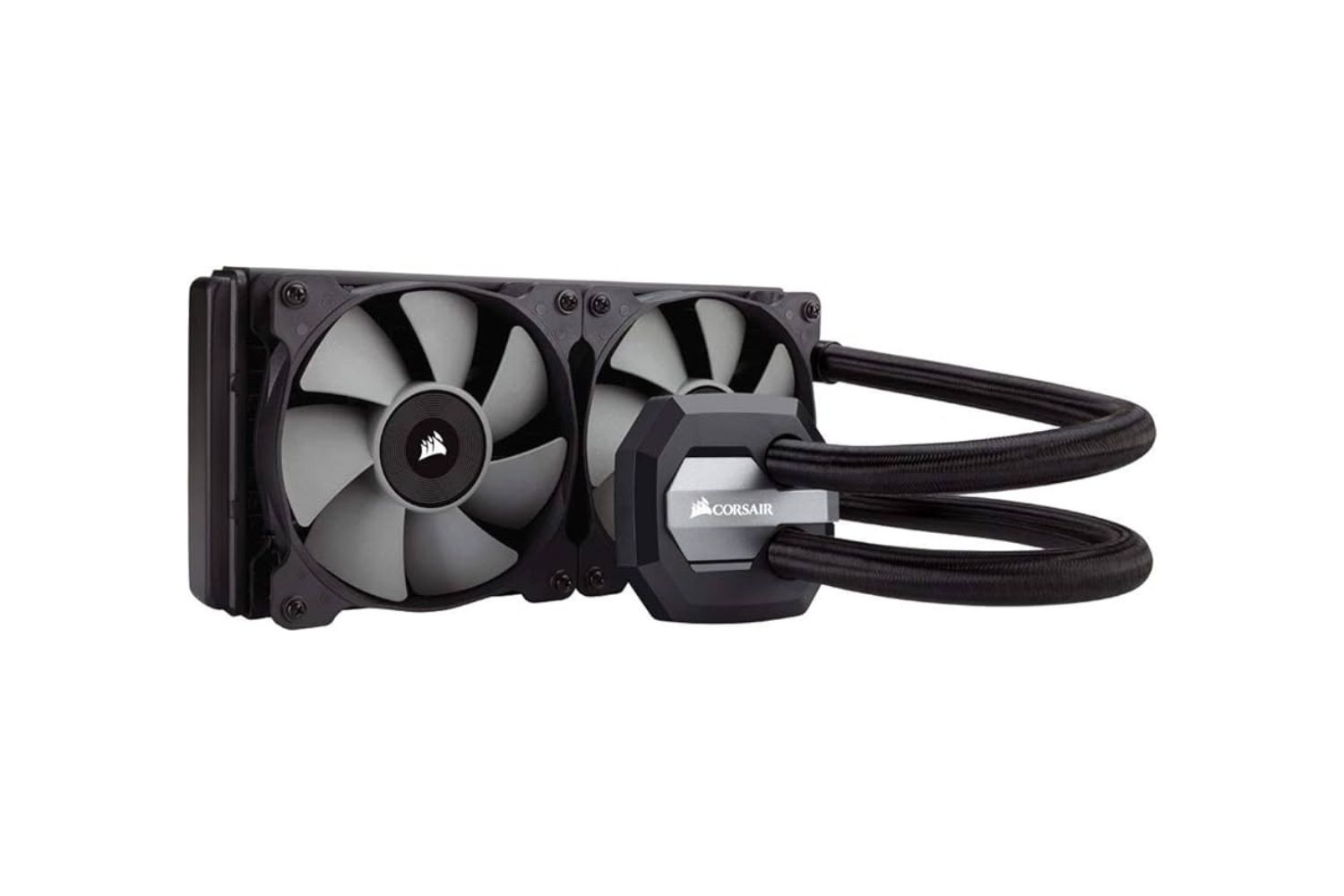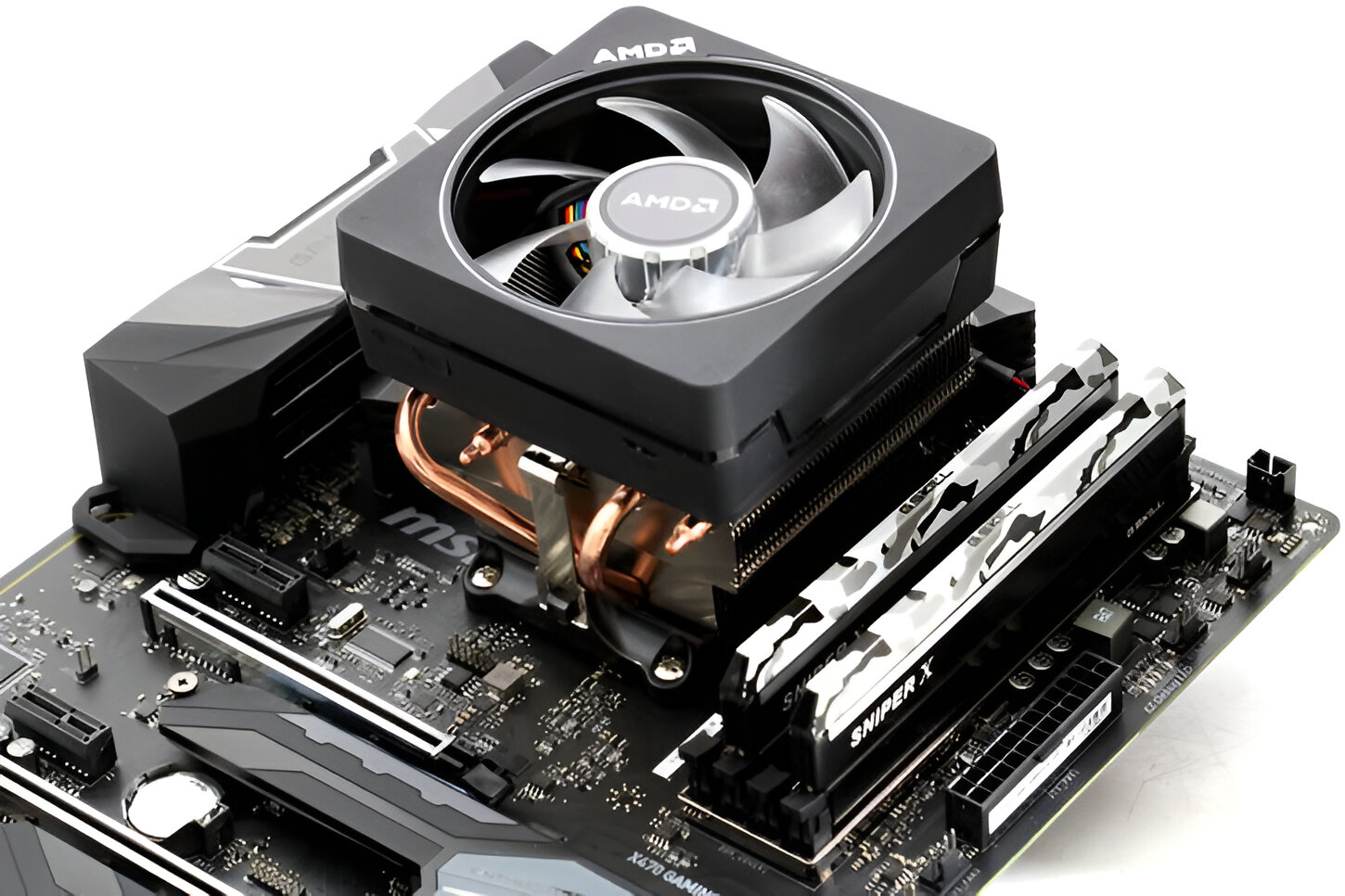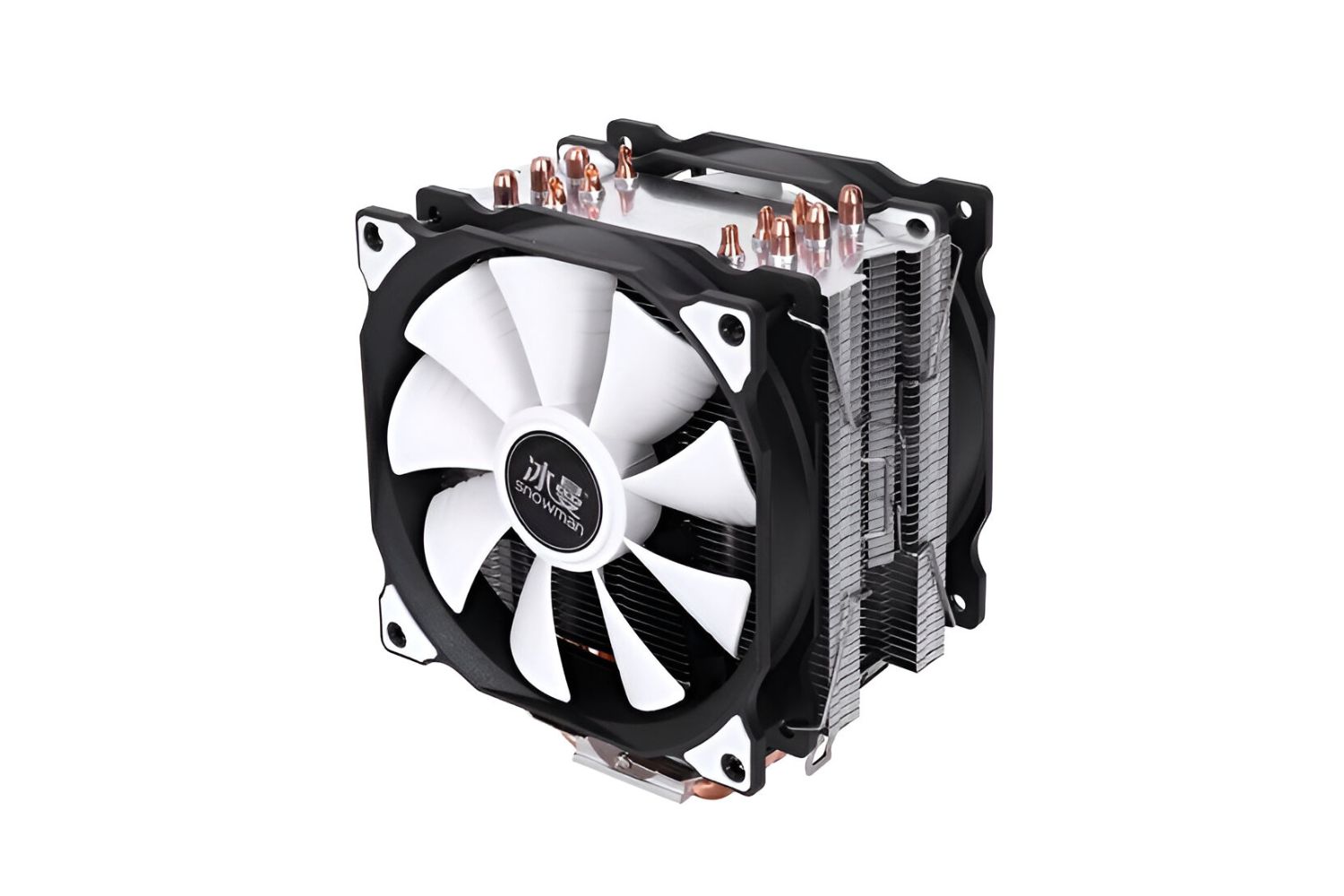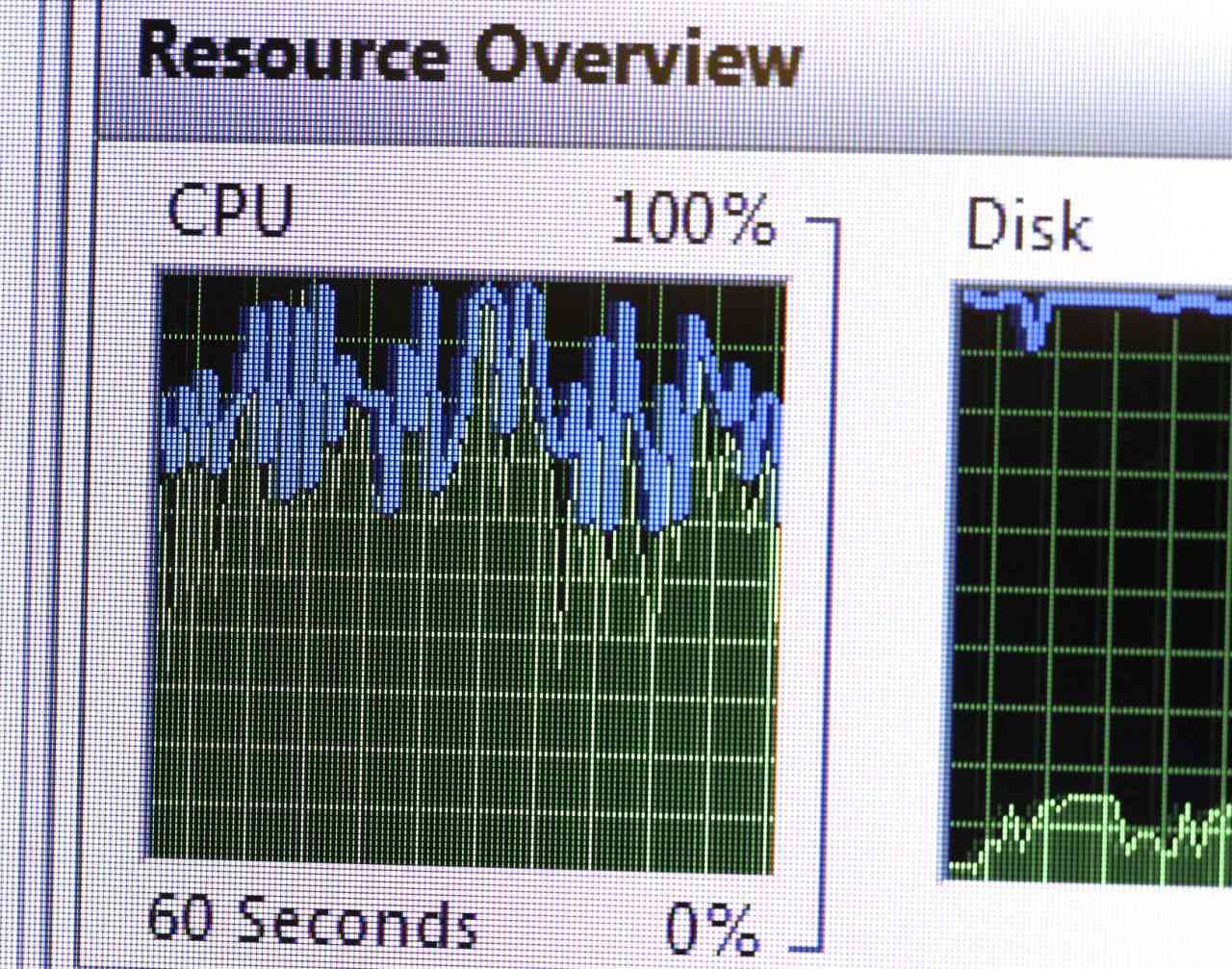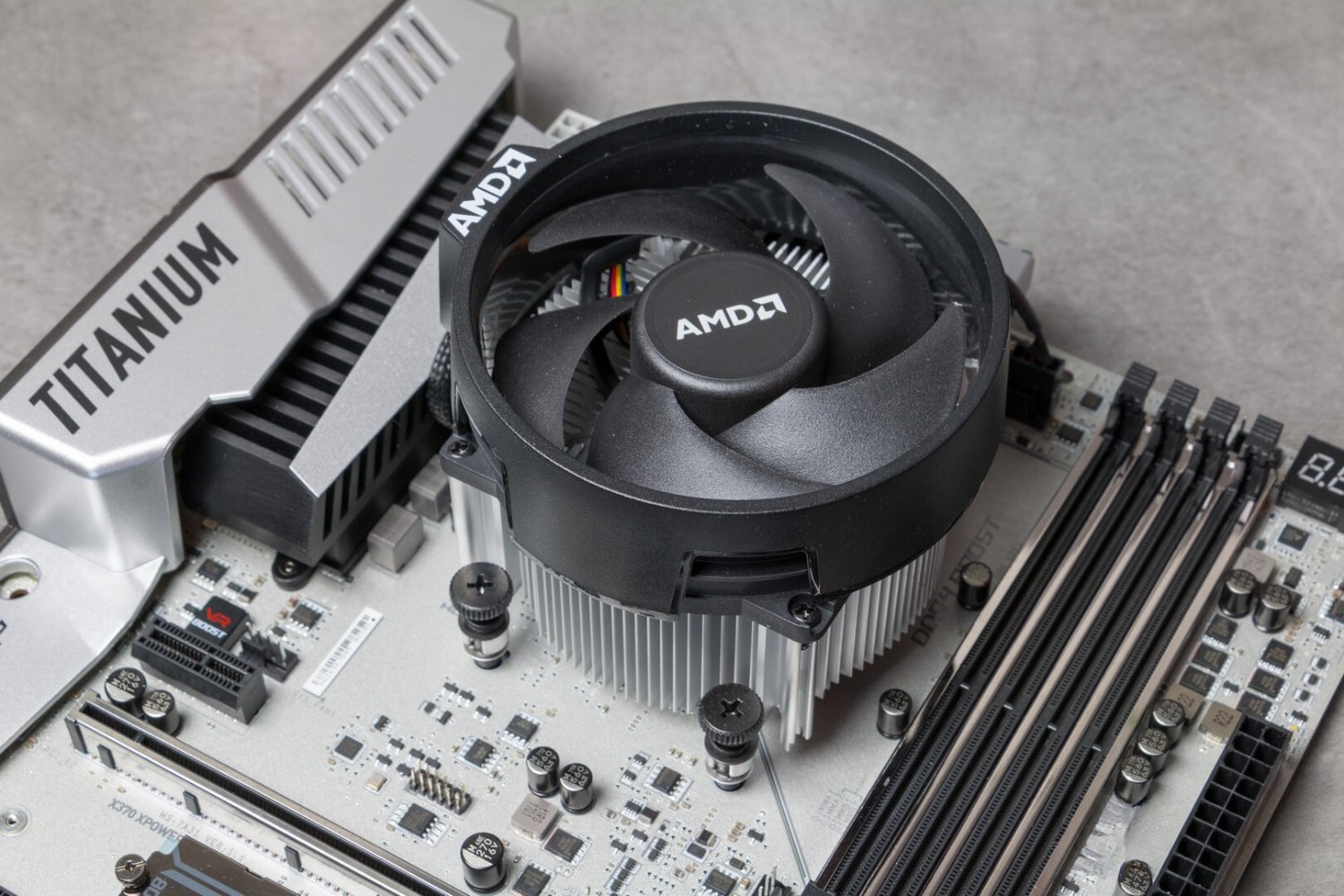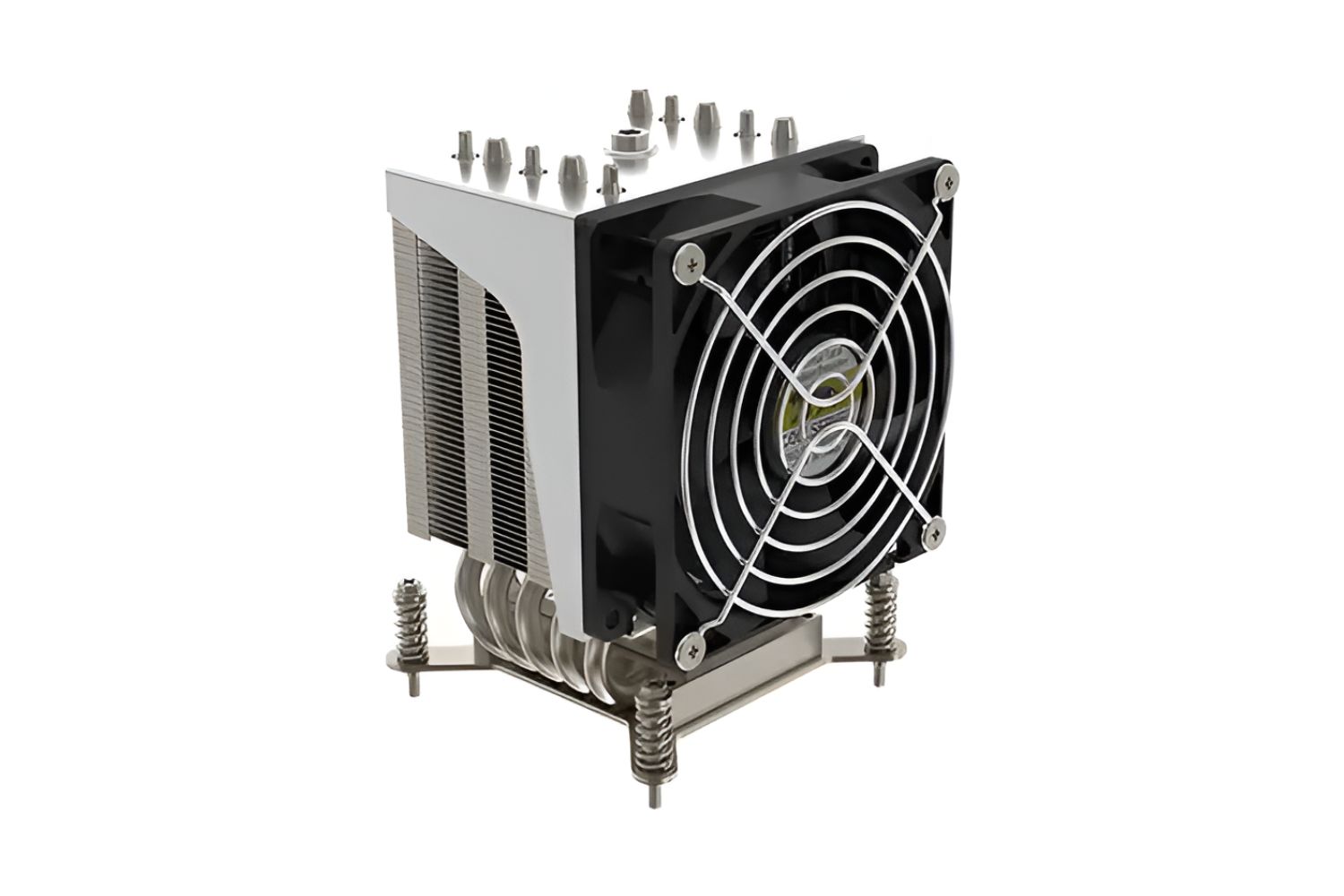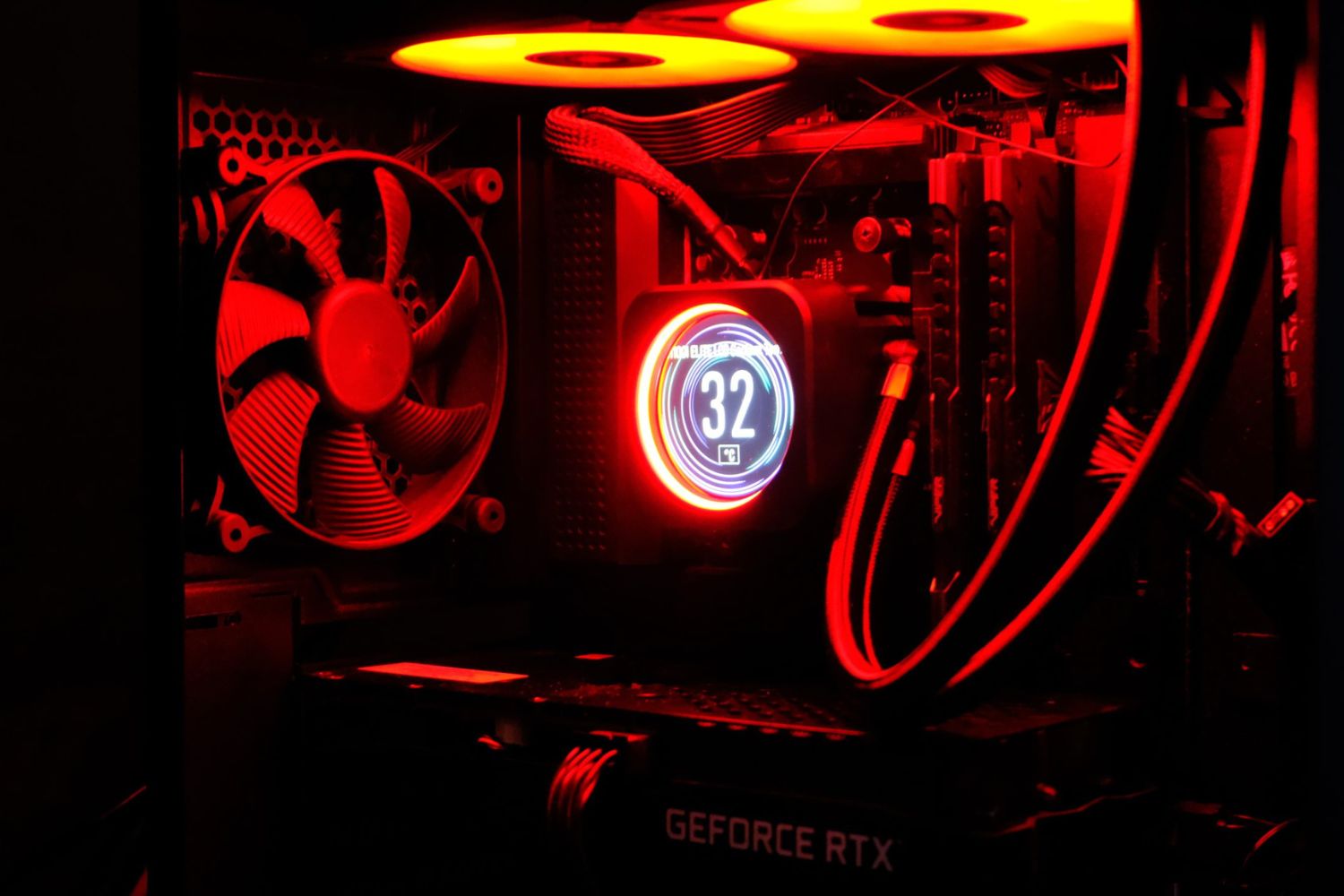Introduction
Having your CPU running at 100% can be a frustrating experience. It slows down your computer, causes programs to freeze, and reduces overall system performance. But what exactly does it mean when your CPU usage is at 100%? In simple terms, it means that your processor is operating at its maximum capacity, trying to handle all the tasks and processes thrown at it in real-time.
The CPU, or Central Processing Unit, is the brain of your computer. It carries out all the necessary calculations and executes instructions to perform various tasks. When the CPU usage reaches 100%, it indicates that the processor is fully utilized and cannot handle any additional workload.
There can be several reasons why your CPU is running at 100% usage. It could be due to running too many programs simultaneously, malware or virus infections, outdated or incompatible drivers, insufficient RAM, background applications consuming excessive resources, or even system overheating.
In this article, we will explore these causes in detail and provide you with effective ways to reduce your CPU usage. By following these steps, you can improve your computer’s performance and keep your CPU from working at full capacity constantly.
What is CPU Usage?
CPU usage refers to the percentage of your computer’s central processing unit (CPU) that is being utilized at any given time. It is a crucial metric that indicates how much of the processor’s capacity is being used to carry out tasks and execute instructions. CPU usage is measured in percentage, with 100% indicating that the CPU is operating at its maximum capacity.
Your CPU’s usage can vary depending on the tasks and programs running on your computer. When you open an application or run a process, it requires CPU resources to perform its operations. The more intensive the task or program, the higher the CPU usage will be.
In general, low to moderate CPU usage is normal and expected during regular computer usage. However, when CPU usage consistently remains at 100% or near that level, it can cause performance issues such as lagging, freezing, and slow responsiveness. This high CPU usage typically indicates that the processor is overwhelmed and struggling to keep up with the demands placed upon it.
Monitoring your CPU usage is essential for troubleshooting performance problems and identifying resource-intensive tasks or processes. You can easily check your CPU usage in the Task Manager (Windows) or Activity Monitor (Mac). These system tools provide real-time information about the processes and applications using CPU resources, allowing you to pinpoint the source of high usage.
Understanding CPU usage is crucial for optimizing your computer’s performance. By identifying and addressing high CPU usage issues, you can ensure that your CPU operates efficiently and smoothly, leading to improved overall system performance.
Causes of High CPU Usage
Experiencing high CPU usage on your computer can be frustrating and detrimental to its performance. There are several factors that can contribute to this issue. Let’s take a closer look at some common causes of high CPU usage:
- Running too many programs or processes: When you have multiple applications or processes running simultaneously, they can collectively consume a significant portion of your CPU resources. This can result in high CPU usage and slow down your system.
- Malware or virus infection: Malicious software can cause your CPU usage to spike as it constantly runs in the background and consumes system resources. It is essential to regularly scan your computer for malware and remove any infections to reduce the strain on your CPU.
- Outdated or incompatible drivers: Device drivers play a crucial role in facilitating communication between hardware devices and your operating system. If your drivers are outdated or incompatible, they can cause high CPU usage as they struggle to perform their tasks efficiently.
- Insufficient RAM: If your computer lacks sufficient Random Access Memory (RAM), your CPU may have to work harder to compensate for the limited memory resources. This can lead to high CPU usage as it struggles to handle the workload within the available memory.
- Background applications consuming resources: Some applications and processes may continue to run in the background even when you’re not actively using them. These background tasks can consume CPU resources and cause high CPU usage. Identifying and managing these applications can help alleviate the issue.
- System overheating: If your computer’s cooling system is not functioning optimally, it can lead to overheating. This, in turn, can cause your CPU to work harder and experience high usage. Regularly cleaning the cooling fans and ensuring proper ventilation can help prevent overheating.
Understanding these common causes of high CPU usage is the first step towards resolving the issue. By pinpointing the underlying cause, you can take appropriate measures to reduce the strain on your CPU and improve your computer’s overall performance.
Running too many programs or processes
One common cause of high CPU usage is running too many programs or processes simultaneously. Each program or process that is running on your computer requires CPU resources to carry out its operations. If you have numerous resource-intensive applications open at the same time, it can overwhelm your CPU and result in high CPU usage.
For example, if you have multiple web browsers, video editing software, games, and other CPU-intensive applications running simultaneously, your CPU will have to divide its resources among them. This can lead to increased CPU usage and slower system performance.
To mitigate this issue, it’s important to prioritize and manage the programs and processes that you have running. If you’re not actively using a particular application, consider closing it or quitting the process to free up CPU resources. This will allow your CPU to allocate its power more efficiently to the programs or processes that you need in the moment.
You can also make use of task management tools, such as the Task Manager on Windows or Activity Monitor on Mac, to monitor the CPU usage of each program or process. Identify the ones consuming a significant amount of CPU resources and determine if they are essential. If not, consider closing or uninstalling them to reduce the CPU workload.
Additionally, some programs may have settings that allow you to limit their CPU usage or adjust their performance profiles. By optimizing these settings, you can reduce the strain on your CPU and ensure a smoother overall system performance.
Remember, managing the number of programs and processes running simultaneously is crucial in preventing high CPU usage. By being mindful of the applications you have open and closing unnecessary ones, you can alleviate the strain on your CPU and improve your computer’s performance.
Malware or virus infection
One of the leading causes of high CPU usage is malware or virus infection on your computer. Malicious software can hijack your CPU resources, running in the background and consuming a significant amount of processing power. This can result in a noticeable increase in CPU usage and a decline in your computer’s performance.
Malware can infiltrate your system through various means, such as email attachments, infected websites, or malicious downloads. Once inside your computer, it can run hidden processes or tasks that continuously utilize CPU resources to carry out malicious activities, such as data theft or spreading further infections.
To combat malware and reduce high CPU usage, it is crucial to regularly scan your computer using reputable antivirus or anti-malware software. These security programs can detect and remove malware, preventing it from consuming CPU resources.
Ensure that your antivirus software is up to date and set to perform regular scans. Scan your entire system thoroughly to identify and eliminate any existing malware infections. Additionally, enable real-time protection to detect and block malware in real-time, preventing further CPU usage spikes.
It’s important to note that different antivirus software may have varying levels of effectiveness in detecting and removing malware. Therefore, it’s recommended to research and choose a reliable and reputable security solution that fits your needs.
In addition to regular scans and virus protection, it’s essential to practice safe browsing habits. Avoid clicking on suspicious links, downloading files from untrusted sources, or opening attachments from unknown email senders. This helps minimize the risk of malware infection and subsequent high CPU usage.
By taking proactive steps to protect your computer from malware and viruses, you can mitigate the risk of high CPU usage and maintain optimal system performance.
Outdated or incompatible drivers
Outdated or incompatible drivers can be a significant cause of high CPU usage on your computer. Device drivers are software components that facilitate communication between your hardware devices and the operating system. When drivers become outdated or incompatible, they may not function efficiently, leading to increased CPU usage.
Drivers that are not up to date can result in performance issues and conflicts with other system components. This can lead to excessive CPU usage as the processor works harder to compensate for the inefficient driver operations.
To address this issue, it’s essential to keep your drivers updated. There are several ways you can do this:
- Windows Update: Windows has a built-in feature that automatically searches and installs driver updates. Ensure that you have Windows Update enabled, and regularly check for updates to ensure that your system has the latest driver versions.
- Manufacturer’s website: Visit the website of your device’s manufacturer and look for the driver support section. Enter your product details and download the latest driver updates specifically designed for your hardware model.
- Driver update software: There are third-party driver update tools available that can scan your system and automatically update outdated drivers. These tools can simplify the process by ensuring that all your drivers are up to date with minimal effort.
By updating your drivers, you can improve compatibility, enhance performance, and potentially reduce high CPU usage caused by outdated or incompatible drivers.
It’s important to note that sometimes driver updates can introduce new issues or conflicts. If you notice a sudden increase in CPU usage after updating a driver, it may be worth rolling back to a previous version or seeking assistance from the manufacturer’s support team.
Regularly checking for driver updates and keeping them up to date is crucial to optimize your computer’s performance and minimize high CPU usage related to outdated or incompatible drivers.
Insufficient RAM
Insufficient Random Access Memory (RAM) can be a contributing factor to high CPU usage on your computer. RAM is an essential component that temporarily stores data and instructions that your computer’s processor needs to access quickly. When your system has limited RAM, the CPU may have to work harder to compensate for the lack of available memory, resulting in increased CPU usage.
When you run multiple programs or processes simultaneously, they require a portion of your computer’s RAM to function efficiently. If the available RAM is insufficient to accommodate all the active programs, the excess data is stored on the hard drive using a process called swapping or paging. Unfortunately, accessing data from the hard drive is much slower than accessing it from RAM, which can lead to increased CPU usage as the processor waits for data to be swapped in and out.
To alleviate the issue of high CPU usage due to insufficient RAM, you can consider upgrading your computer’s memory. Adding more RAM allows your system to handle a greater number of programs and processes simultaneously, reducing the strain on the CPU.
Before upgrading your RAM, it is important to check your computer’s specifications and determine the maximum amount of RAM it can support. Additionally, consider the specific requirements of the programs and tasks you frequently use. This will help you determine the optimal amount of RAM to install for your needs.
In some cases, you may also need to consider upgrading your operating system to take full advantage of the additional RAM. Older operating systems may have limitations on the maximum amount of RAM they can recognize and utilize.
Upgrading your system’s RAM can significantly improve its performance, reduce high CPU usage, and enhance multitasking capabilities. If you’re experiencing frequent high CPU usage due to insufficient RAM, investing in a RAM upgrade can be a worthwhile solution.
Background applications consuming resources
Background applications running on your computer can often contribute to high CPU usage. These are programs or processes that continue to run in the background even when you’re not actively using them. They can consume valuable CPU resources and significantly impact system performance.
Many applications, such as antivirus software, cloud storage services, instant messaging applications, and system utilities, have background components that run to provide specific functionality or perform scheduled tasks. While these background tasks are important, they can sometimes use up excessive CPU resources, leading to high CPU usage.
To address this issue and reduce CPU usage, it’s important to identify and manage these background applications. Here are some steps you can take:
- Disable startup programs: Many applications automatically launch at system startup and continue to run in the background. Review the list of startup programs and disable unnecessary ones that may be consuming CPU resources.
- Adjust application settings: Some applications allow you to adjust their settings to limit background processes and reduce CPU usage. Explore the settings of resource-intensive applications and modify them to optimize performance.
- Use task management utilities: Task management tools, such as the Task Manager in Windows or Activity Monitor on Mac, can provide detailed information about the CPU usage of each running program or process. Identify the applications consuming excessive CPU resources and consider quitting or disabling them if they are not essential to your workflow.
- Update or replace resource-heavy applications: Some applications may have known issues with high CPU usage. Check for software updates or consider replacing them with alternative programs that are more efficient and less resource-intensive.
By managing background applications, you can ensure that your CPU resources are allocated to the programs and processes you actively use, reducing overall CPU usage. This can result in improved system performance and a smoother computing experience.
System overheating
System overheating is another potential cause of high CPU usage. When your computer’s components, including the CPU, get too hot, it can lead to increased CPU usage as the processor struggles to perform efficiently under elevated temperatures. High CPU usage due to overheating can result in performance degradation and even system instability.
Overheating can occur due to various reasons, such as insufficient ventilation, buildup of dust and debris in the cooling system, or malfunctioning cooling fans. When the internal temperature rises above safe levels, the CPU’s performance is automatically throttled to protect it from damage. However, this throttling can cause an increase in CPU usage as it tries to maintain stability under the heat stress.
To address the issue of system overheating and reduce high CPU usage, the following steps can be taken:
- Clean cooling fans and vents: Dust and debris can accumulate on cooling fans and vents over time, restricting airflow and causing the system to overheat. Regularly clean these components to ensure proper cooling and ventilation.
- Ensure proper ventilation: Make sure that your computer is placed in a well-ventilated area. Avoid blocking the vents with objects or placing the computer on surfaces that can trap heat.
- Check fan functionality: Ensure that all the cooling fans within your computer are functioning properly. If a fan is not spinning or running at a slower speed, it may need to be replaced to maintain adequate cooling.
- Use cooling pads or external fans: Cooling pads or external fans can help to dissipate heat and maintain lower temperatures for your computer. These accessories can be particularly useful for laptops, which often have limited internal cooling mechanisms.
- Monitor system temperature: Utilize software tools that monitor your system’s temperature in real-time. If you notice temperatures consistently reaching high levels, it could indicate an underlying cooling problem that needs to be addressed.
By mitigating system overheating, you can prevent high CPU usage caused by the CPU’s need to compensate for the increased heat. This can lead to improved system performance, stability, and a reduction in overall CPU usage.
How to Reduce CPU Usage
Experiencing high CPU usage can negatively impact your computer’s performance and overall user experience. Luckily, there are several effective strategies you can employ to reduce CPU usage and optimize system performance. Here are some steps you can take:
- Close unnecessary programs and processes: Identify and close any programs or processes running in the background that are not essential. This frees up CPU resources and reduces overall CPU usage.
- Scan for malware and remove infections: Run a thorough scan with reliable antivirus or anti-malware software to detect and remove any infected files or malicious programs that may be causing high CPU usage.
- Update drivers: Keeping your device drivers up to date ensures optimal performance and can help resolve any issues that may contribute to high CPU usage. Check for driver updates from the manufacturer’s website or use driver update software.
- Upgrade RAM: If your computer has insufficient Random Access Memory (RAM), upgrading to a higher capacity can alleviate the strain on the CPU and reduce high CPU usage.
- Manage background applications: Disable or quit unnecessary background applications that are consuming CPU resources. Adjust their settings if possible to limit their impact on CPU usage.
- Check and clean system cooling fans: Ensure that your computer’s cooling system is functioning properly. Clean the cooling fans and vents to prevent overheating, which can lead to increased CPU usage.
Implementing these measures can significantly reduce CPU usage and improve your computer’s performance. It’s important to note that the effectiveness of these solutions may vary depending on the specific cause of high CPU usage.
Regular maintenance and monitoring play a vital role in preventing and addressing high CPU usage. Keep an eye on your computer’s performance, monitor CPU usage in real-time, and take proactive steps to optimize its performance.
Close Unnecessary Programs and Processes
One effective way to reduce CPU usage is to close unnecessary programs and processes running on your computer. Having multiple applications and processes simultaneously running in the background can consume valuable CPU resources and contribute to high CPU usage. By closing the ones that are not essential, you can free up CPU capacity and improve system performance.
Here are some steps to help you identify and close unnecessary programs and processes:
- Task Manager (Windows) or Activity Monitor (Mac): Open the Task Manager or Activity Monitor to view a list of running processes and their corresponding CPU usage. Look for processes that are consuming a significant amount of CPU resources and are not essential to your current tasks.
- End Process (Windows) or Quit Process (Mac): Once you have identified unnecessary processes, you can terminate them using the “End Process” or “Quit Process” option in the Task Manager or Activity Monitor, respectively. Be cautious to close only non-essential processes to avoid interfering with critical system operations.
- Start-up Programs: Many applications are configured to launch automatically when you start your computer. Review the list of start-up programs and disable those that you do not need to run at startup. This prevents them from running in the background and consuming CPU resources unnecessarily.
- Background Tasks: Some applications may have background tasks running even when the main program is closed. These tasks can contribute to high CPU usage. Check the settings of individual applications and disable any non-essential background tasks.
- System Tray Icons: Pay attention to the system tray icons on your taskbar. Some applications may have background processes running even if the main window is closed. Right-click on these icons and see if there is an option to exit or quit the application entirely.
By closing unnecessary programs and processes, you can prioritize the CPU resources for the tasks that require them the most, resulting in reduced CPU usage and improved system responsiveness.
Regularly monitoring and managing your running programs and processes can help maintain optimal CPU usage levels and ensure a smoothly running computer.
Scan for Malware and Remove Infections
Malware and viruses can significantly impact your computer’s performance and contribute to high CPU usage. These malicious programs run unnoticed in the background, consuming valuable system resources and causing various issues. To reduce CPU usage and restore optimal system performance, it is crucial to scan for malware and remove any infections.
Here are the steps to effectively scan for malware and remove infections:
- Install reputable antivirus software: Choose a reliable antivirus software that offers real-time protection and regular updates. Install it on your computer to detect and prevent malware infections.
- Perform a full system scan: Initiate a thorough full system scan using your antivirus software. This scan will thoroughly examine all files and folders on your computer, looking for any signs of malware infection.
- Quarantine or delete infected files: When the scan completes, the antivirus software will notify you of any infected files found. Follow the prompts to quarantine or delete the infected files to remove the malware from your system.
- Update your antivirus software: Regularly update your antivirus software to ensure that it can effectively detect and remove the latest malware threats. New threats emerge constantly, and keeping your software up to date is essential for optimal protection.
- Enable real-time protection: Enable the real-time protection feature of your antivirus software, if available. This feature actively monitors your system’s activities, preventing malware from executing and causing high CPU usage in real-time.
- Be cautious with downloads and email attachments: Avoid downloading files from untrusted sources or opening email attachments from unknown senders. These can often be malware carriers that can lead to infections and high CPU usage. Exercise caution and use common sense when interacting with online content.
Regularly scanning for malware and keeping your antivirus software up to date are essential practices for maintaining a secure and well-performing computer. By removing infections and preventing new ones, you can significantly reduce CPU usage caused by malware-related activities and ensure smooth operation of your system.
Update Drivers
Outdated or incompatible drivers can contribute to high CPU usage and hinder your computer’s performance. Device drivers act as intermediaries between your hardware devices and the operating system, facilitating smooth communication. By updating drivers to the latest versions, you can enhance compatibility, fix known issues, and potentially reduce CPU usage.
Here’s how you can update your drivers effectively:
- Identify outdated drivers: Start by identifying which drivers need updating. Access the Device Manager on Windows or the Apple Menu on Mac, and look for devices with a yellow exclamation mark or indication of outdated drivers.
- Manufacturer’s website: Visit the website of the device’s manufacturer and navigate to the support or downloads section. Enter your device model or serial number to find the latest driver versions compatible with your specific hardware.
- Automatic driver update software: There are reliable third-party driver update software available that can automatically scan your computer, detect outdated drivers, and install the latest versions. These tools simplify the process by handling the updates for you.
- Windows Update: For Windows users, Windows Update automatically checks for the latest driver updates. Ensure that your update settings are configured to include driver updates to take advantage of this feature.
- Driver installation: Once you have obtained the latest drivers, follow the installation instructions provided by the manufacturer. This typically involves running an installer or executing a downloaded driver package to update the existing driver software.
- Restart your computer: After updating drivers, it is often recommended to restart your computer. This ensures that the new driver configurations are properly applied and integrated into the system.
Regularly updating your drivers helps optimize hardware performance and can resolve compatibility issues that may be causing high CPU usage. By ensuring that your drivers are up to date, you provide the necessary software support for efficient CPU utilization, resulting in improved system performance and reduced CPU usage.
Upgrade RAM
Insufficient Random Access Memory (RAM) can lead to high CPU usage as your computer struggles to handle multiple tasks simultaneously. Upgrading your RAM can provide your system with more memory resources, reducing the strain on the CPU and improving overall performance.
Here are the steps to upgrade your RAM effectively:
- Determine your current RAM: Check the amount of RAM installed on your computer. To do this, you can access the System Information utility on Windows or About This Mac on Mac computers. Note the capacity and type of RAM that your system currently uses.
- Identify maximum RAM capacity: Consult your computer’s documentation or manufacturer’s website to determine the maximum amount of RAM your system can support. This information will help you decide how much additional RAM you can install.
- Purchase the appropriate RAM: Select RAM modules that match your system’s specifications, such as capacity, type, and speed. Purchase the RAM from a reputable vendor to ensure compatibility and reliability.
- Power off and unplug your computer: Before installing the new RAM, shut down your computer, disconnect the power cord, and remove any peripherals. This step ensures your safety and prevents potential damage to the hardware.
- Access and locate the RAM slots: Open your computer’s case or access panel to locate the RAM slots. Consult your computer’s manual or manufacturer’s documentation for specific instructions based on your computer model.
- Insert the new RAM modules: Handle the RAM modules by their edges and align them with the slots carefully. Apply gentle and even pressure on both ends until the module clicks into place. Ensure that the retaining clips secure the RAM modules firmly.
- Close the computer case: Once the new RAM is installed, close the computer case or reattach the access panel. Ensure that all screws are tightened securely to prevent any loose connections.
- Power on your computer: Reconnect the power cord and any peripherals, then power on your computer. Your system should automatically recognize the new RAM. Depending on your operating system, you may need to adjust RAM settings in the BIOS or UEFI to ensure proper utilization.
- Verify the RAM upgrade: To confirm that the RAM upgrade was successful, you can check the System Information utility or About This Mac to see the updated RAM capacity. Additional RAM should result in improved system performance and reduced CPU usage.
By upgrading your RAM, you provide your computer with more memory resources, which helps to alleviate the strain on the CPU and reduce high CPU usage. This results in smoother multitasking, faster application responsiveness, and an overall improved computing experience.
Manage Background Applications
Background applications running on your computer can contribute to high CPU usage, even if you’re not actively using them. Managing these applications effectively can help reduce CPU usage and improve system performance. Here are some steps to manage background applications:
- Identify resource-intensive applications: Use task management tools like the Task Manager (Windows) or Activity Monitor (Mac) to identify applications consuming significant CPU resources in the background.
- Assess necessity: Determine whether each background application is necessary for your workflow or if it can be closed without impacting your work. Some applications, such as antivirus software or cloud storage services, may be essential and should remain active.
- Disable or exit unnecessary programs: Close or exit any non-essential background applications to free up CPU resources. Look for options within each application to disable or exit the background components.
- Adjust settings: Explore the settings of resource-intensive applications and adjust their configurations to minimize CPU usage. Look for options to limit background processes or adjust performance profiles.
- Manage startup applications: Review the list of programs that launch automatically at startup. Disable or remove any unnecessary programs from the startup list to prevent them from running in the background and consuming CPU resources unnecessarily.
- Close browser tabs and extensions: Web browsers and their extensions can consume a significant amount of CPU resources. Close unnecessary tabs and disable or remove extensions that are not actively being used.
- Regularly update software: Ensure that all your applications, especially resource-intensive ones, are up to date with the latest versions. Updates often include bug fixes and performance improvements that can reduce CPU usage.
- Restart your computer: Periodically restarting your computer helps clear temporary data and processes, including those associated with background applications. This can help reduce CPU usage and improve overall system performance.
By managing background applications effectively, you can free up CPU resources and allocate them to the tasks and programs that you actively use. This results in reduced CPU usage, improved system responsiveness, and enhanced overall performance.
Check and Clean System Cooling Fans
Proper cooling is crucial for keeping your computer’s temperature in check and preventing overheating, which can lead to high CPU usage. Over time, the cooling fans inside your computer can accumulate dust and debris, hindering their performance. Regularly checking and cleaning your system’s cooling fans can help maintain optimal cooling and reduce the strain on the CPU.
Here’s how you can check and clean your system cooling fans effectively:
- Power off and unplug your computer: Before inspecting or cleaning the cooling fans, shut down your computer, disconnect the power cord, and remove any peripherals. This ensures your safety and prevents any accidental damage to the hardware.
- Locate the cooling fans: Open your computer’s case or access panel and locate the cooling fans. They are typically found near the CPU, graphics card, or power supply unit. Refer to your computer’s manual or manufacturer’s documentation if you’re unsure about their specific locations.
- Inspect for dust and debris: Use a flashlight or compressed air to inspect the cooling fans for any visible dust or debris buildup. Pay attention to the fan blades, fan housing, and surrounding areas.
- Clean the cooling fans: Gently remove the dust and debris from the cooling fans using compressed air or a soft brush. Hold the fan blades in place while cleaning to prevent them from spinning too fast, which could cause damage. Be thorough but careful during the cleaning process.
- Remove stubborn dirt: If there is stubborn dirt or grime that can’t be easily removed with compressed air or a brush, dampen a cloth with isopropyl alcohol and gently wipe away the dirt. Ensure that the alcohol has dried completely before powering on your computer.
- Close the computer case: Once the cleaning is complete, close the computer case or reattach the access panel. Ensure that all screws are tightened securely to maintain proper functioning and prevent any loose connections.
- Power on your computer: Reconnect the power cord and any peripherals, then power on your computer. The cleaned and properly functioning cooling fans should help ensure adequate airflow and prevent overheating.
Regularly checking and cleaning your system cooling fans can prevent overheating and reduce high CPU usage. By maintaining optimal cooling, you can ensure that your CPU operates within safe temperature limits, leading to improved system performance and reduced strain on the CPU.
Conclusion
High CPU usage can significantly impact your computer’s performance, leading to slow responsiveness, lagging, and decreased productivity. Fortunately, there are several effective strategies to reduce CPU usage and optimize system performance.
In this article, we explored various causes of high CPU usage, ranging from running too many programs and malware infections to outdated drivers and insufficient RAM. We also discussed the importance of managing background applications and checking system cooling fans to ensure optimal CPU performance.
To reduce CPU usage, it is crucial to close unnecessary programs and processes, scan for malware and remove infections, update drivers, and consider upgrading RAM if it is insufficient. Managing background applications and regularly maintaining system cooling fans are equally important measures to minimize high CPU usage and the associated performance issues.
By implementing these strategies, you can alleviate CPU resource strain, enhance system performance, and create a smoother and more efficient computing experience. Regular monitoring, maintenance, and taking proactive steps to optimize CPU usage will help ensure that your computer operates at its best.
Remember, each computer configuration and usage scenario is unique, so it may take some experimentation and adaptation to find the most effective solutions for your specific situation. Take the time to assess the causes of high CPU usage on your computer and implement the appropriate strategies accordingly.
With consistent monitoring and optimization, you can enjoy a faster, more responsive computer with reduced CPU usage, allowing you to maximize productivity and enjoy a frustration-free computing experience.







